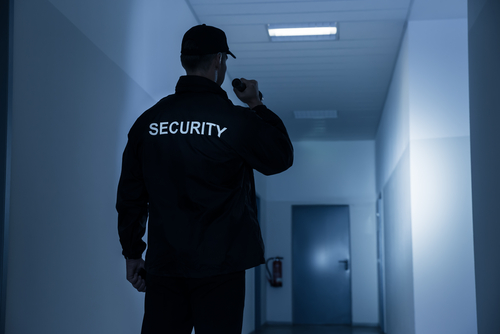
Your development is finished, you have some security guards, and your CCTV system is up-to-date. Is your building secure? It might seem as though it is, but there’s so much more to be done. While many developers take steps to ensure that their buildings and tenants are secure, there are some out there who ignore some of the most basic elements of security, both in and around the building.
So, what do you need to be sure that you’re following best practices when securing your building? To start, you should work on designing a full-scale security plan that fits both the level of risk in your building, its needs, and the needs of potential tenants. Here are a few tips that will help.
A Man (or Woman) on the Inside
Many developers and facilities managers contract security out because they don’t have someone on the inside with the proper experience. When a security team comes in from a contractor, they might have post orders that are generalized, not taking specific risks into account, and leaving blind spots. It’s important for a thorough analysis to take place before these orders are developed.
These orders can vary pretty drastically based on the type of development and the type of tenant. It wouldn’t make much sense to have a plan for a distribution facility applied to an apartment complex, would it?
Aesthetics vs Security
Developers and architects aren’t always considering security when they’re designing a building, and that’s part of why an analysis is so important. If a development has ground-level lighting or hidden cameras, for example, the aesthetics of the space might be more appealing overall. But simply positioning cameras conspicuously can be a deterrent to criminals. The same goes for well-lit areas.
Securing Every Entrance
Every door on a building is an opportunity for unwanted guests to enter. Emergency exits are often neglected because they aren’t used as commonly. A simple fix here is to attach alarms to the door. Still, whether the development is an office building or an apartment complex, people don’t always know whom they work or live next to.
With offices, employee ID badges can address this, but it’s a little more complicated with residential developments. After all, people usually don’t need an ID to get into their homes. This can be addressed by an overall security awareness program, so that all residents have an idea of how to handle situations with unknown individuals. This will help them be more attentive to what’s going on around them.
Understand Your Technology
Security technology has come a long way over the past decade, and it’s constantly being updated to be more secure and more user-friendly. Regardless of how easy it is to use, though, everyone on the team needs to be aware of its capabilities and limitations.
Some companies don’t even take the time to learn how to use their technology, such as CCTV. Oftentimes, after it is installed, these cameras are then set to switch randomly at intervals, but when there are over 40 cameras in a building, is this really that useful?
Technology has changed significantly, and many camera-based security systems can now be triggered by events, rather than set to cover a broad area at random. Take the time to understand what your tech can do, and design your security around that.
These tips set a good starting point for building security best practices, but every building is different. There are a multitude of variables to be considered that can’t always be predicted, but with the right amount of effort, you can provide a safe environment for any and all of your tenants.


